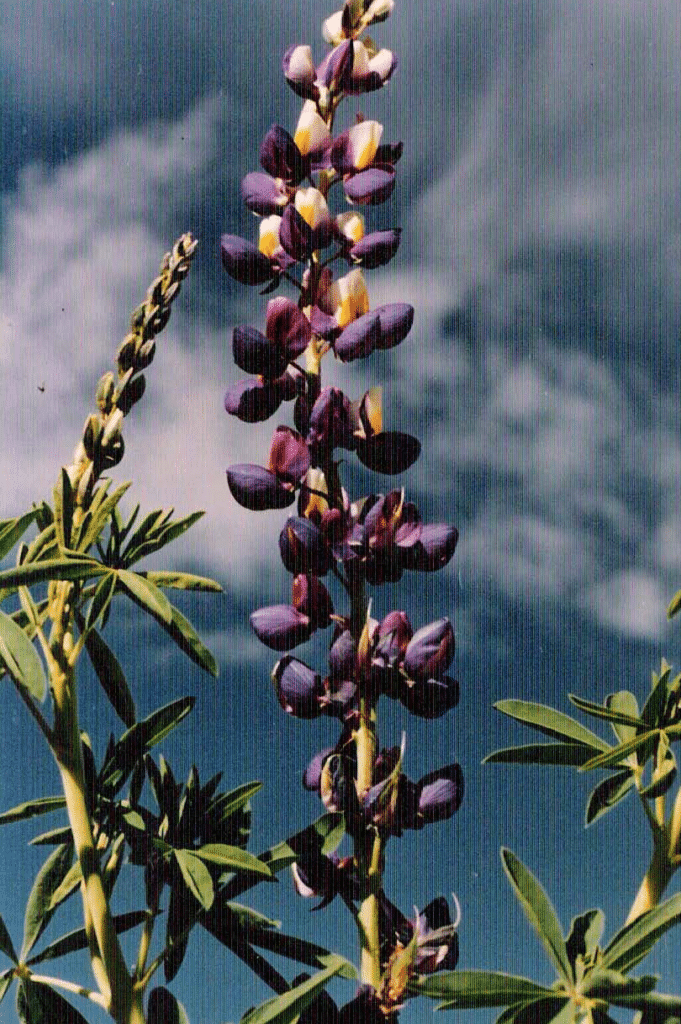Tarwi:
What is it? History, cultivation, nutritional value, uses, recipes, and more...
Tarwi (Lupinus Mutabilis), also known as chocho or Andean lupin, is an Andean legume from the Lupinus family that grows at altitudes between 2,500 to 3,500 meters above sea level and possesses exceptional nutritional properties due to its high content of proteins, vitamins, and minerals.
Índice
What is Tarwi?
Tarwi is a legume of American origin, cultivated in the Andes, and is grown in the Peruvian highlands in regions such as Cajamarca, Ancash, Huánuco, Junín, Cusco, and Puno, as well as in the Andean areas of Ecuador and Bolivia. This nutritious legume thrives between 2,000 and 3,800 meters above sea level in places with low precipitation (300 to 600 mm) and in temperate and cold climates. It is an erect herbaceous legume with robust, somewhat woody stems that reach a height of 1.8 to 2 meters. Tarwi adapts easily and tolerates poor soils, droughts, and low temperatures. It is distinguished by its high protein content, greater than that of soy, making it a plant of global interest.
Tarwi is also used when the soil lacks sufficient nutrients because of its fertilizing characteristics. It facilitates the fixation of atmospheric nitrogen into the soil, making it one of the best fertilizers for preserving soil fertility.
In 2020, approximately 11,000 hectares of tarwi were harvested, yielding 15,000 metric tons of this crop. The exports of tarwi seeds accounted for sales of 1.2 million dollars, with Ecuador being the main destination. According to the Agricultural Census (Cenagro), there are currently more than 30,000 farming families generating their income from tarwi cultivation.
History of Tarwi
Tarwi is a superfood that ancient Peruvians have been able to harness since before the Incas. Seeds have been found in burial sites from the Nasca civilization (500 to 100 BC), and there are also paintings of this plant on ceramics and ceremonial vessels from the Tiahuanaco culture (1000 to 500 BC) (Antúnez de Mayolo, 1982). During those times, tarwi played a key role in their diet and agricultural production systems. The legume reached its peak and underwent improvements during the Inca period when it became an essential part of the daily diet of the empire. It was prepared with camelid meat and dried fish in small quantities. It was a significant source of protein and fatty acids for the population. The first reference to tarwi during the colonial period comes from Father Valverde, who, in a letter to the king of Spain in 1539, suggested that taxes be paid with this grain. During this time and in the Republic, tarwi consumption decreased, leading it to disappear from some agricultural systems. However, indigenous communities knew how to maintain the genetic variability of the crops until today.
The origin of lupin is attributed to two main groups: those from the Old World (Mediterranean), called “altramuces” or sweet lupins (Lupinus albus L., Lupinus luteos L., and Lupinus angustifolius L.), and those from the New World (Ecuador, Peru, and Bolivia), called tarwis or chochos (Lupinus mutabilis Sweet) and their wild relatives.
Habitat of Tarwi
Tarwi originates from the central Andes and is mainly cultivated in the Andean region of Ecuador, Peru, and Bolivia, where it goes by different names and is used gastronomically in various preparations (Camarena, 2011). In Peru, tarwi is cultivated in regions such as Ancash, Cajamarca, Cusco, Huánuco, Junín, and Puno; in areas located between 2,000 and 3,800 meters above sea level.
In Ecuador, approximately 6,000 hectares of tarwi are grown in the provinces of the Sierra region: Cotopaxi, Chimborazo, Pichincha, Bolívar, Tungurahua, Carchi, and Imbabura (Peralta et al., 2012). In Bolivia, over 4,000 hectares are grown in the departments of Cochabamba, Chuquisaca, Potosí, Oruro, and La Paz.
Traditionally, this legume is grown under rainfed conditions, in very small and isolated plots (Tapia and Fries, 2007). Planting can be done in furrows spaced between 50 to 60 cm apart or through direct seeding, minimum tillage, or no-till methods. The best yields are obtained using the furrow planting method, with 60 to 80 kg/ha of seed being used.
Interestingly, tarwi is often planted on the edges of crops such as maize, potatoes, and quinoa, to serve as protection against livestock. Due to its bitter taste and odor, it repels animals and prevents them from consuming it.

Common Name of Tarwi
| Bolivia | chuchus muti, chuchus. |
| Bolivia y sur del Perú: | Ullus |
| Ecuador, Colombia y Perú | chocho, chochito |
| Azángaro, Perú | ccequella |
| España | ccequella |
| Inglés | Andean lupin, pearl lupin |
| Quechua | tarwi o tarhui |
| España | altramuz, lupini y lupino amargo |
| Aymara | tauri |
| Quechua de Cochabamba | chuchus muti |
Scientific Name of Tarwi
Lupinus mutabilis
Taxonomy of Tarwi
| Kingdom | Plantae |
| Division | Magnoliophyta |
| Class | Magnoliopsida |
| Order | Fabales |
| Family | Fabaceae |
| Subfamily | Faboideae |
| Tribu | Genisteae |
| Gender | Lupinus |
| Subgender | Platycarpos [1] |
| Species | L. mutabilis |
Synonymy of Tarwi
Lupinus cruckshanksii
Lupinus mutabilis var. mutabilis
Etymology of Tarwi
Lupinus: The generic name comes from the Latin word “lupus,” which means “wolf.” In the past, it was believed that these plants were harmful to the soil, which is why this name, derived from a predator, was used to refer to them. It is now known that they are not only not harmful but also help fix nitrogen in the soil.
Mutabilis: The Latin epithet means “changeable, mutable.”
Geographical Distribution of Tarwi

Cajamarca, Ancash, Huánuco, Junín, Cusco, Puno
Seasonal Availability of Tarwi
- June, July, August, September
Varieties of Tarwi
Up to three subspecies can be differentiated. Gross (1982) mentions that the traditional names in Peru refer to “chocho” in the northern region and “Tarwi” in the central region, considering them two subspecies. Tapia (1982b) includes a third possible cultivated Lupinus subspecies found south of Lake Titicaca, in Yunguyo and Pomata, called “tauri” in the southern region of Puno, of Aymara origin.
Nutritional Value of Tarwi
Tarwi is considered a superfood today due to its high nutritional value, comprising over 50% proteins, 24% carbohydrates, 13% dietary fiber, 21.9% essential fats (omega 9, 6, and 3), and 7.5% minerals (iron, calcium, magnesium, potassium, zinc), as well as Vitamin B12. In addition to its high protein content, it is also rich in calcium, making it a great food for maintaining healthy teeth and bones. It is an excellent option for those who are lactose intolerant and for individuals seeking non-animal origin foods.
Thanks to its tryptophan content, which produces a feeling of well-being, tranquility, and optimism, tarwi has the ability to combat stress. Additionally, it helps regulate blood sugar levels since it has fewer carbohydrates than other foods, making it recommended for diabetics.
Its contribution of essential fats promotes the proper development of the central nervous system, improves immune function, and protects heart health.
It is recommended to consume this precooked seed without its husk before engaging in significant physical training, especially for athletes. Due to its slow absorption, it increases endurance time through glucogenesis (formation of important glycogen reserves during exercise), helping to maintain energy until the end of the exercise, among other benefits.
Andean inhabitants have used tarwi since pre-Hispanic times, and they still use it, to eliminate “harm” caused by parasites due to its high alkaloid content (seeds boiled on an empty stomach). It is also used as a treatment for dandruff and hair loss (poultice of ground seeds), in infusions to control colds and fevers, and even to help combat constipation.
Health Benefits of Tarwi
Tarwi has a high content of fatty acids, including unsaturated ones such as oleic, linoleic, and linolenic acids. It also contains fewer carbohydrates than other legumes and has a higher protein content than soy.
Contraindications or Side Effects
Tarwi does not present significant contraindications, but care should be taken to consume it in a non-bitter form to avoid its content of quinolizidine alkaloids, which gives it a certain degree of toxicity.
| 10 Porciones por Kilogramo | |
| Tamaño de porción | 100g |
| Cantidad por porción Calorías |
434 |
| Cantidad por 100g | |
| Energía | 1,814 kJ |
| Grasa Total | 12.7 g |
| Sodio | ● |
| Carbohidratos totales | 74.9 g |
| Carbohidratos disponibles | 73.8 g |
| Fibra Dietaria | 1.1 g |
| Proteínas | 6.0 g |
| Calcio | 22 mg |
| Fósforo | 665 mg |
| Zinc | 0.64 mg |
| Hierro | 0.60 mg |
| Potasio | ● |
| Agua | 4.8 g |
| Cenizas | 1.6 g |
| Vitamina A | 0 μg |
| Tiamina (B1) | 0.04 mg |
| Riboflavina (B2) | 0.04 mg |
| Niacina (B3) | 0.50 mg |
| Vitamina C | 0.00 mg |
| Acido Fólico (B9) | ● |
| β-Caroteno | ● |
| Fuente: Tablas peruanas de composición de alimentos – Centro Nacional de Alimentación y Nutrición – Ministerio de Salud – Perú | |
Derived Products and Forms of Consumption of Tarwi
Uses of Tarwi
Tarwi is mainly used as a food rich in essential fats, proteins, as well as fiber and minerals.
- Culinary
- Medicinal
- Industrial
Culinary Use of Tarwi
According to Santiago Antúnez de Mayolo, tarwi accounted for 5% of the Inca diet, providing abundant protein to the population.
Currently, the seeds of this legume give rise to countless gastronomic preparations. In its fresh form, it can be used as an appetizer, in stews, purees, sauces, chocho ceviche, soups (tarwi cream), stews (pepián), desserts (mazamorras with orange), and beverages (papaya juice with tarwi flour). It is consumed in a large part of the Andes, mainly in the Peruvian territory. It is also used in processed products such as milk and flour.
The flour is used up to 15% in baking, providing the advantage of significantly improving the protein and caloric value of the product.
One of the most well-known dishes made with tarwi is "ceviche de chocho," a preparation very similar to the original dish, but replacing fish with this legume. It is also highly appreciated in "El solterito," an Arequipeño dish in which it can be included with other ingredients.
It is also consumed in sauces like "ocopa" and "huancaína," as it has the necessary characteristics to replace milk or crackers in these preparations.
To optimize the use of tarwi, it is recommended to soak it for at least two hours before cooking to soften it. This eliminates the somewhat bitter taste that characterizes it, which is due to its alkaloid content.
Today, tarwi is often sold "de-bittered," thus losing these alkaloids and making consumption easier.
Medicinal Use of Tarwi
Among the main medicinal properties that tarwi offers are:
Aids in calcium absorption Contributes to children's growth stage Ideal for people with diabetes Helps combat kidney problems Natural laxative Combats stress Contributes to good digestion due to its fiber content Improves immune function and heart health.
Industrial Use of Tarwi
Some industrial uses of tarwi include:
- Fertilizer: During flowering, the plant is incorporated into the soil as green manure, improving the amount of organic matter, structure, and moisture retention in the soil.
- Fuels: Harvest residues (dry stems) are used as fuel due to their high cellulose content, which provides good calorific power.
- Firewood: Dry tarwi trunks have been used as firewood since ancient times.
- Forage: Tarwi flour, mixed with quinoa by-products, is a nutrient-rich food used in the fattening process of sheep, cattle, and pigs.



